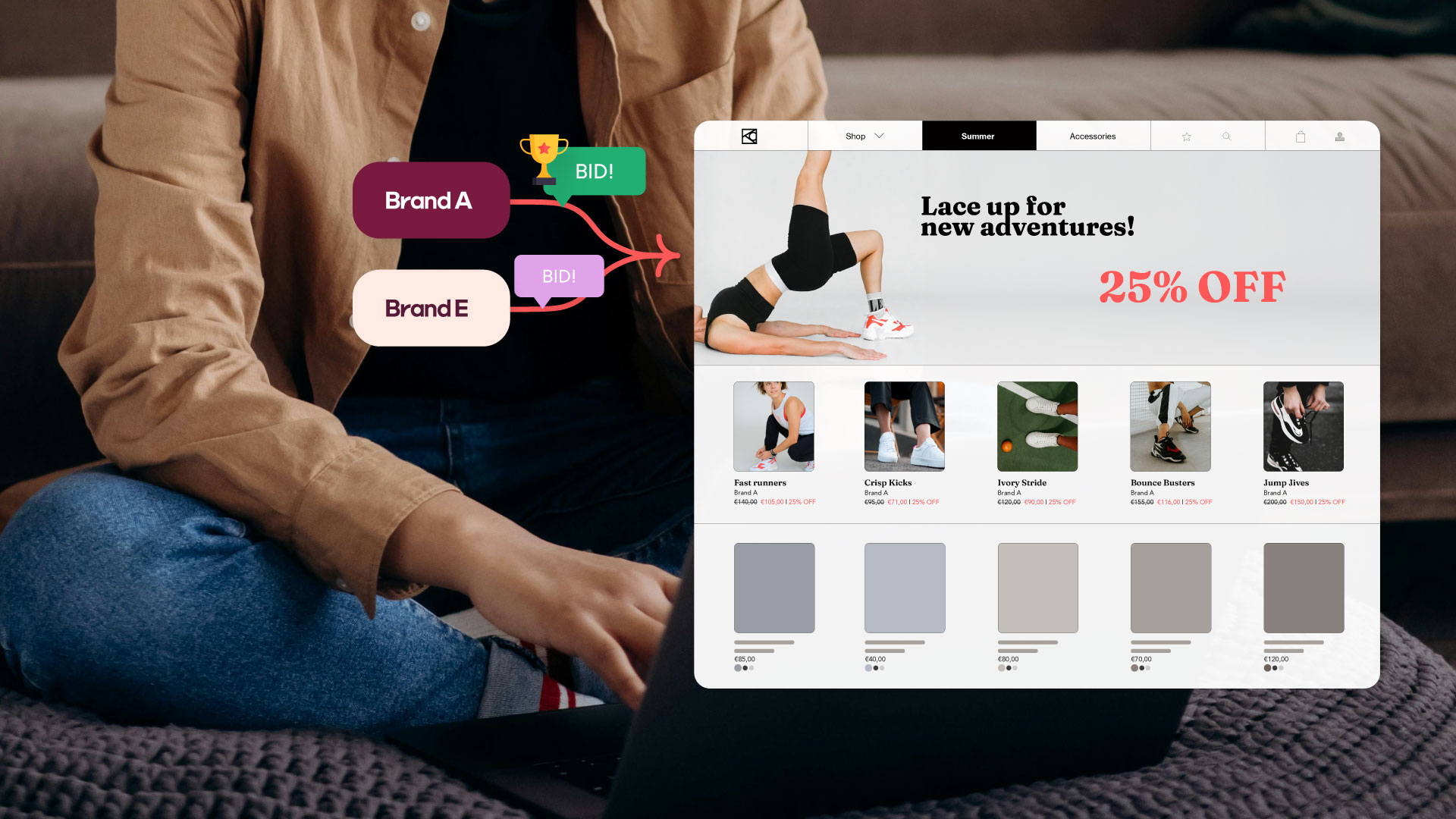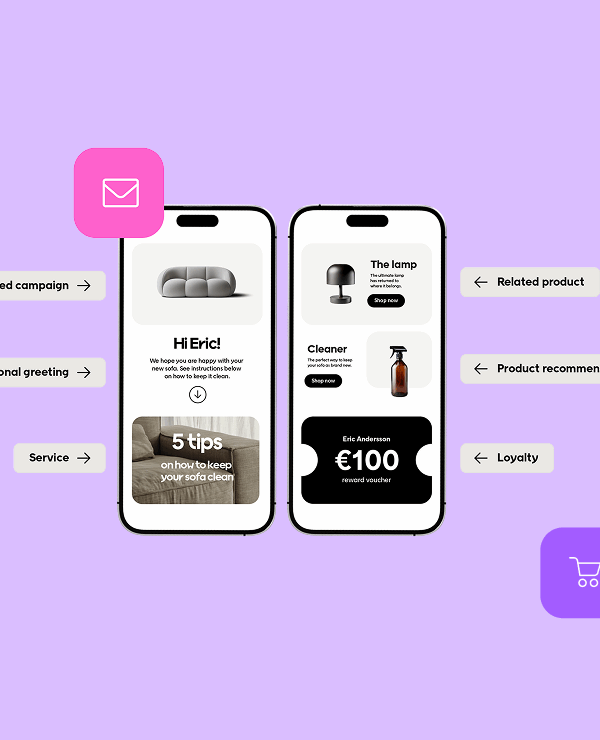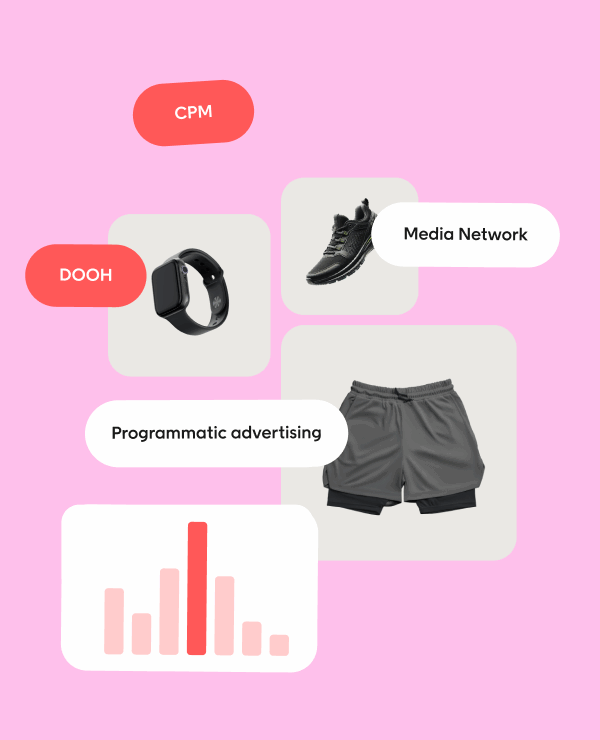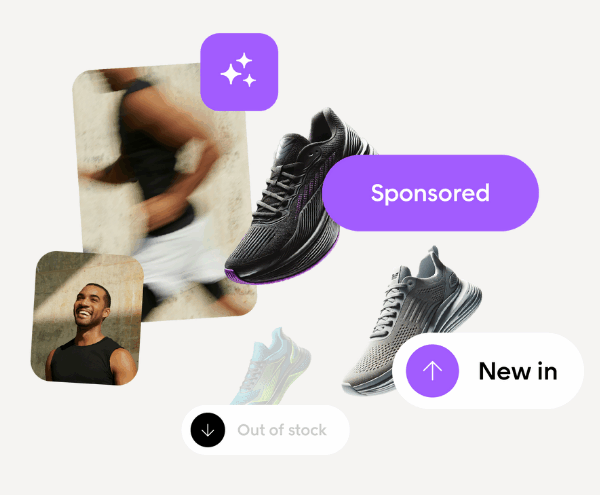What is retail media?
Retail media is simply advertising, covering paid promotional activities strategically deployed across media platforms owned by retailers. These platforms span physical store settings and digital channels, providing a wide array of opportunities for brands to present their offerings to the target audiences of the retailer.
Retail media transforms retailers into publishers, empowering them to curate and deliver compelling content that resonates with their audience. This shift enables retailers to monetize their platform and the loyal audience they have built over the years. It also enhances their ability to influence consumer behavior and drive sales.
Benefits of retail media
From a retailer’s perspective
In many ways, retailers are already in the media business. Many have some loyalty and membership programs with dedicated fans and followers. By tapping into the value created from the efforts put into building a loyal customer base, retailers have a lot to gain!
From a pure business perspective, retailers are adding a revenue stream to their business by tapping into brand marketing budgets, beyond just trade-related funds. As the value can be directly linked to sales for the brand a premium price can be charged, and the costs can be kept low as work involved on the retailer’s side can be more and more automated. Essentially, retailers achieve this by providing brands with access to premium exposure space and behavioral audience and inventory data for targeting consumers, such as previous buyers or in-market shoppers.
From a brand’s perspective
By leveraging retailers’ media channels, brands can strategically place themselves directly in front of a target audience with strong intent and interest. Compared to other options, it can give strong insight into consumer trends and patterns.
It is a shortcut to shoppers actively browsing for products, effectively reaching them when they are most receptive to communication. It also creates a closed loop with zero data loss due to third-party cookies since ad placement and purchase take place in the same environment, essentially creating a clear path from the action to the outcome.
Whether through targeted digital ads, sponsored content, or in-store displays, retail media provides brands with the means to amplify their visibility and foster meaningful connections with consumers. By embracing retail media strategies, brands can tap into the power of retail-owned channels to enhance their marketing efforts, deepen customer relationships, and ultimately achieve tremendous success in today’s competitive marketplace.
Can all retailers sell advertising space on their platforms?
In short, all retailers can start offering retail media packages to brands. But it may look slightly different depending on the retailer’s business itself. For retailers or department stores that serve as resellers for various brands, the opportunity lies in offering advertising space to these brands to boost their presence. Given the pre-existing business relationship, the ramp-up time to get started can be pretty short and straightforward.
Suppose you, as a retailer, sell your own products as private labels amongst other brands; you can still choose to sell advertising space to brand and keep the balance between the private label and advertising through business rules.

Why has retail media become so important
Both brands and retailers can reap the benefits from retail media and, when executed well, create immersive experiences for shoppers. In addition to this, several factors contribute to the growing popularity of retail media:
Data and targeting opportunities for brands
Retailers using customer data platforms to gain control and comprehensive insights into their audience form a fundamental building block enabling this new era of retail media. Creating customer segments automatically allows you to target the right people at the right time, effortlessly. On top of this—when third-party cookies go away, it will become increasingly more complex to do intelligent targeting on platforms that have been relying on them. For brands, it’s time to start looking for alternatives for their ad spend.
Leverage the merchandising platform to boost and promote brands
Something to keep an eye on is how integrate sponsored products ads into product pages and in search results. You don’t want the shoppers experience to get disrupted with products that are not relevant to them.
An online store powered by a product intelligence engine ensuring relevant products are shown across different areas like search, navigation, recommendations, and product listings is ready to explore this model. If you, in addition, can power it with an automated bidding model for sponsored product placements and banners —you are way ahead of the game.
Connect ad spending with sales
For brands, direct channels to their audience create clearer links between advertising expenditure and sales. Retail media provides closed-loop attributions that function independently of third-party cookies, utilizing retailers’ first-party data. Essentially, this enables brand marketing managers to easily track the sales generated from their marketing expenses.
In summary, the popularity of retail media can be attributed to the changing landscape of consumer behavior, the availability of valuable data for targeting, revenue opportunities for retailers, and improved performance tracking. Additionally, there’s intense competition for consumer attention and the integration of advertising into the shopping experience.
Where should a retailer start?
It is easy to get stuck thinking about the tech solutions, but when starting up with retail media there is work to be done to enable the sales, marketing, and operations of that business. Essentially creating a clear package of this product and forming your go to market strategy and messaging around.
The best starting point when starting out with retail media
The list is long, and retail media networks are still in development. Most retailers will start with online display ads and sponsored product recommendations. If you want to start dipping your toes in the pool and hope for some insights on where to start, either is the perfect starting point.
Decide on channels and create a retail media network
The evolving landscape of retail media presents brands with many opportunities to engage consumers at various touchpoints along their purchasing journey.
Retailers’ different channels can be grouped into one platform offered as a package to suppliers. Such a platform is called a retail media network (RMN). Examples of retail advertising spaces grouped in a retail media network are:
- Sponsored product recommendations
- Online display ads
- Email/SMS
- Digital coupons and vouchers
- Branded landing pages
- Off-site campaigns
- Social media campaigns
In addition, you can add a solution to serve supplier content:
- Boost products
- Serve display ads on-site and DOOH
Decide on a monetization model
Most likely, your package will include online display ads and sponsored product recommendations that will form the basis for your monetization.
Sponsored products are often monetized based on cost per click (CPC), while display tends to be sold based on views or cost per mille (CPM), where the charge is based on the number of impressions or times the product or ad has been shown to a consumer.
So, the platform you work with should be able to handle different business models such as CPC and CPM.
Audience data per channel and segment
With channels in hand and a monetization model in the making, retailers must delve into their first-party audience data across different channels and begin constructing the segments they intend to offer. This process will provide clarity on the composition of your retail media package and to whom it will be valuable.
Build intention-based audiences
Being hyper-relevant can be more important than necessarily having considerable numbers in the segment. Therefore, look for intention-based data that provides insights into audiences who show interest in specific brands or product types.
Reporting
Venturing into retail media will put some additional pressure on the retailers to ensure they can meet the demand for reporting data, both on target audience data and insights on Return on Ad Spend (ROAS).
There are no formal standards for reporting or evaluating the effectiveness of retail media campaigns. However, it’s crucial to adhere to underlying privacy regulations. Interactive Advertising Bureau (IAB) has developed guidelines to provide education on solutions and changes in underlying technology and privacy regulations. For anyone wishing to dive deep into the topic, the IAB serves as an excellent resource for valuable insights.
Marketing departments and ad agencies will come with demands, and retailers who are prepared to meet those demands in a transparent way will be set up for successful relationships and return buyers.
Invoicing
When you first start with a retail media offering, this part can be done manually and very hands-on. But as the business scales, this needs to be handled automatically, as it otherwise will eat into the profitability and ease of use for all parties involved. So, plan for success when choosing your platform—and ensure it can support automatic invoices. It will save you some frustration down the line.
Want to talk about Voyado’s customer experience platform and our role in retail media?
The retail media landscape is evolving quickly, and we at Voyado are excited to partner with you. Curious to find out more about retail media, view our webcast Curious about here.









